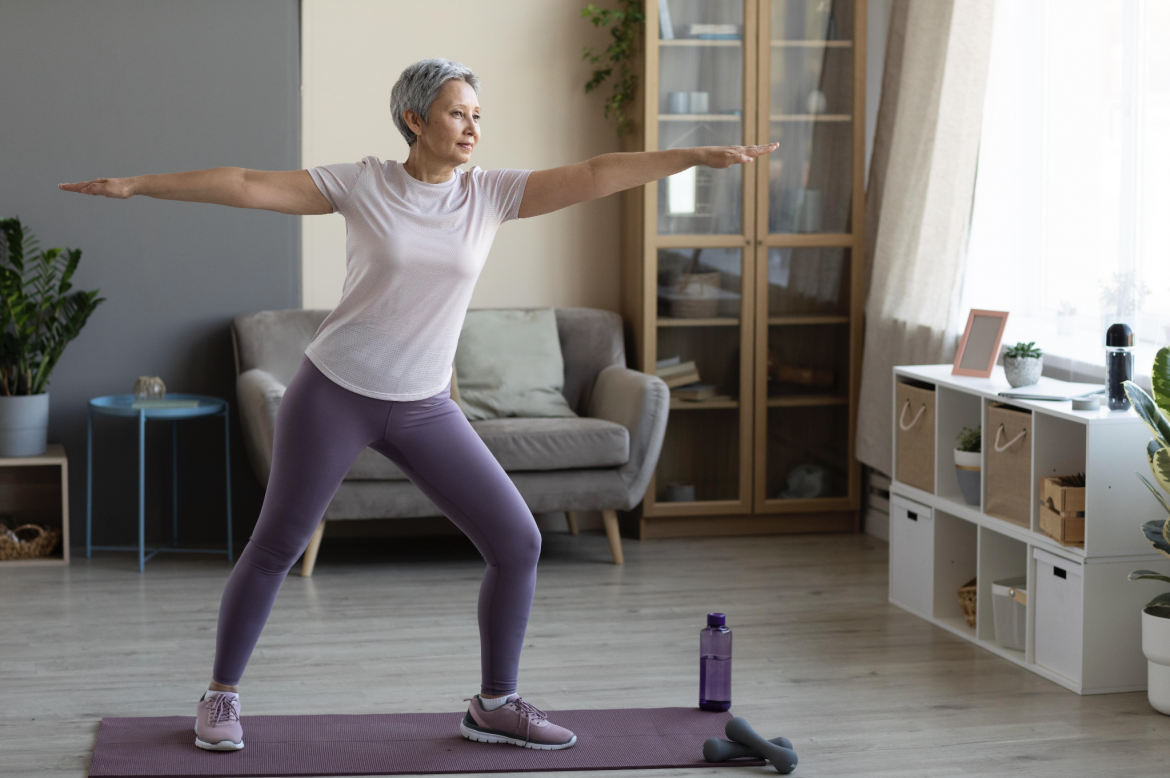Wave goodbye to lockdown love handles with habits you can actually keep!
Rather than resorting to quick fixes, like fad diets, calorie restriction and over-exercising, which are impossible to maintain long term, there are several ways to get rid of unwanted weight, and keep it off for good. Experts reveal the simple ways to achieve sustainable weight loss – and they won’t leave you feeling deprived.
WORKOUT FOR WEIGHT LOSS
Any exercise that gives the afterburn effect is best for weight loss. ‘Burning calories post-exercise equates to a better weight-loss result,’ says Lyndsey Todd, personal trainer. ‘EPOC (Excess Post-exercise Oxygen Consumption) can last up to 72 hours after you have stopped exercising. Weight training is great for EPOC, and so are HIIT (High-Intensity Interval Training) workouts.’
IT’S A HIIT
HIIT involves doing around three to five intervals of high-intensity exercise followed by a prolonged rest period. You can download free programmes, such as the HIIT Workouts and Timer. by 7M app (free to download on iOS and Android), which provides voice-over Wave goodbye to lockdown love handles with habits you can actually keep exercises, tutorials and handy countdown alerts. You can also ask your personal trainer or gym instructor to create you
a workout based on your specific goals.
LIFTING WEIGHTS
‘Weightlifting can help you increase muscle and decrease body fat, so although you may not see a change in your actual scale weight, there will be a change in body composition,’ says Lyndsey. This is the shape of your body based on the amount of fat and muscle you have. So although two people might weigh the same, if one them has a higher ratio of muscle to fat, their body shape will be leaner and more toned than the other person’s.
TRY COLD-WATER SWIMMING
Research shows swimming in cold water can burn far more calories than in warm water. Why? Our hearts are working harder to pump blood around our bodies.
10 000 STEPS A DAY…REALLY?
‘This is the daily recommendation for health benefits,’ says Lyndsey. ‘This should be spread out through your daily activities, such as walking on your lunch break. ‘You could start with walking three to four times a week and gradually build up from 20 minutes to one hour. But it needs to be a brisk walk to get your heart rate up!’ You’ll know if you are walking briskly if you can talk but not sing the words to a song.
THE FOODS TO EAT
With a change in eating habits, it’s important to make sure your body is still getting all the vital nutrients, minerals and vitamins it needs.
✣ CARBOHYDRATES
Starchy foods are an important part of the diet. ‘They should make up about a third of all the food that we eat,’ says dietitian Clodagh Hackett. ‘You don’t have to avoid or restrict them because they are “fattening”. Instead, be aware of the total amount of starch that you eat and ensure that you are choosing higher-fibre wholegrain varieties. This includes wholewheat pasta, brown rice, potatoes (with their skins on), whole-grain breads and porridge.’ Try to avoid processed foods that contain simple carbs – these are absorbed quickly by the gut and can cause a spike in blood-sugar levels, leading you to feel hungry later on. Simple carbs include sweets, soft drinks, white bread and pasta.
✣ PROTEIN
‘A diet that’s high in protein can help to support weight loss by reducing hunger and boosting the metabolism,’ says Clodagh. The reference nutrient intake (RNI) of protein is roughly 56 g
a day for men and 45 g for women. For context, one egg contains 6 g of protein, 100 g of chicken breast has 31 g of protein and a cup of cooked black beans contains 15 g of protein. Clodagh recommends you try to incorporate two plant-based protein meals per week into your diet, which use lentils or tofu, for example.
✣ FAT
Dietary fats are essential to give our body energy, protect our organs and help keep us warm, but as they are calorie dense, we need to watch our intake. The British Heart Foundation recommends that the average man should have no more than 30 g of saturated fat a day, and the average women should have no more than 20 g a day. To get your fix of healthy fats, enjoy nuts, avocado, seeds and oily fish. Aim for at least two portions of oily fish a week, including mackerel
and salmon. As a guide, a portion of oily fish should fit into the palm of your hand.
✣ FRUIT AND VEGETABLES
‘Aim to eat at least five portions of a variety of fruit and veg each day,’ says Clodagh. ‘Choose from fresh, frozen, tinned, dried or juiced. Not only can vegetables help to maintain your immune system, they are also low in calories while being high in fibre and water, both of which can help to boost feelings of fullness,’ she says. A portion of fruit or vegetables amounts to 80 g.
✣ DAIRY
Our main source of calcium, dairy products and alternatives are a good source of protein too. ‘The total fat content of dairy products can vary a lot, so be sure to check the nutrition information label for the amount of fat, saturated fat, sugar and salt,’ says Clodagh. For example, full-fat milk contains around 7.4 g of fat and 4.8 g of saturated fat per 200 ml, while
skimmed milk contains 0.2 g of fat and 0.2 g of saturated fat per 200 ml. When choosing dairy alternatives, such as soya or almond milks, yoghurts and cheeses, go for the unsweetened, calcium-fortified versions.’
ALSO SEE EVERYTHING YOU NEED TO KNOW ANOUT THE KETO DIET

